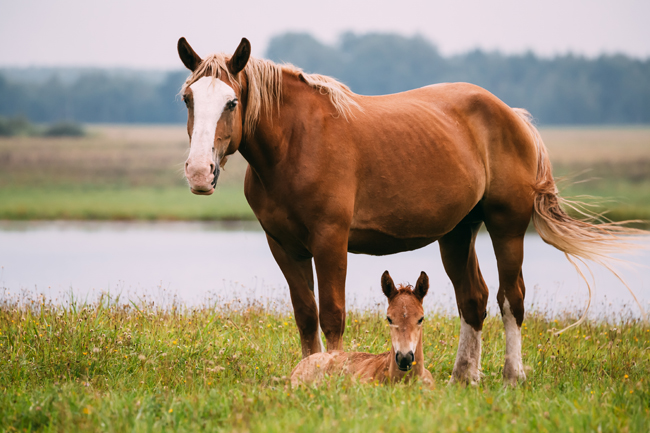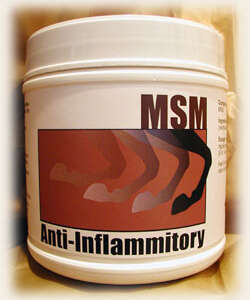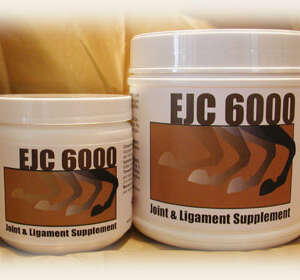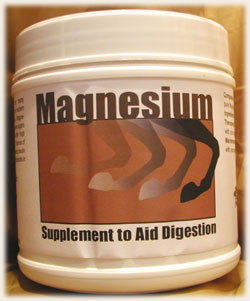
Horse Care
Design Nutrition
Read through the PDF articles below on proper horse care or feel free to shop our products
- Feed Rations for Older Horses
- Old Horse Dilemma
- Winter Care for Horses
- Manure – How do you like those apples?
Feeding Horses Properly Means Enhanced Performance
by: Stephen B. Blezinger
Ph.D, PAS
Part 1
Since the cattle industry began, horses have long been used in the operation of cattle farms and ranches. Over the years, the equine industry has evolved into a stand-alone entity but in many situations, horses remain a very valuable asset to numerous cattle operations despite the emergence of 4-wheelers and the like.
This will be the first of a two-part series in which we are going to deviate substantially from the normal format and discuss nutrition and feeding of horses. While many producers believe all horse care consists of is grass and hay and maybe a little horse and mule feed every few days, research and application has shown that horses have a very specific nutritional physiology and in order for these animals to perform at their best, they must be fed and managed appropriately.
Modern Equine Nutritional Science
The science of equine nutrition has changed tremendously in the last few years. As researchers learn more about how horses digest and utilize nutrients from feeds, and as more and different types of feeds and feeding programs become available, the producer’s feed choices broaden and change. In recent years, we have recently learned that digestibility of a feed is almost as important as its nutrient content. In addition, many other feeds which have been found to work well in equine diets. These include beet pulp, soybean hulls, and rice bran, all of which are derivatives or by-products from the human food manufacturing industry.
To begin this discussion, however, we need to start with the animal itself and at the very center of it all, the horse’s digestive tract.
The Equine Digestive Tract
Like cattle, horses are grazing animals with digestive tracts best suited for eating forages (hay and grasses) for much of their day. In some cases, they will spend as much as 15 to 20 hours grazing or eating other forages. Unlike cattle, they have relatively small stomachs, which in mature animals may hold only about five quarts by volume. Although the actual physical capacity of the stomach is larger, the equine stomach begins to empty when it is only two-thirds full. This is a safety mechanism to prevent lethal stomach rupture since horses cannot eructate (as cattle do when they initiate cud-chewing) or vomit. Feed proceeds from the stomach through the small intestine, a 70-foot-long, tube-like organ, where most of the starch, sugar, fat, vitamins and minerals and about half of the protein from the feed should be digested and absorbed into the bloodstream. The remaining nutrients and the plant fibers continue on to the hindgut (large intestine).
Horses have huge fermentation vats in the hindgut that hold 23-30 gallons of fibrous material while billions of bacteria and other organisms work to digest it very similar to the rumen in a cow. On occasion, you will hear horses referred to as “backwards ruminants.” Fiber-digesting bacteria produce organic acids known as volatile fatty acids or VFAs. These are very short-chain fats, that are used by bacteria and horses for energy. In fact, horses on total forage diets receive up to 70 percent of their energy from these VFAs. Some of the remaining protein and some minerals, especially phosphorus, are absorbed from the large intestine, along with water, which is recycled within the body. Also, bacteria in a healthy horse’s hindgut will produce B-vitamins that can be used by the horse.
The equine digestive system is very efficient if horses are fed mainly grass or hay. But, if we feed more than a few pounds of grain in meals, the system may not work quite as well. Grains (Corn, Milo, Barley, Oats) can be very high in starch (50-75 percent) compared to grasses and hays (
*Adequate amounts of starch-digesting enzymes are not available
*The starch is too compact to be broken down,
*Inadequate time.
Most feed goes from the mouth through the foregut and into the hindgut in less than six hours. Starch entering the hindgut is used in many cases by starch-digesting bacteria to produce lactic acid. The addition of lactic acid, to the hindgut, results in a lowering of the pH in this part of the tract. Many of the beneficial, fiber-digesting bacteria cannot tolerate the more acidic conditions, so they die and release various toxins into the hindgut. The presence of these toxins can result in colic and founder both of which are conditions very detrimental and even deadly to horses. Research has shown that limiting high grain rations to five lbs. or less per head per day greatly reduces the risk of colic and founder in horses.
Most producers who own horses know that animals doing only light work do very well on high-forage rations and thus don’t need much grain. However, many horses need more energy than forage alone can provide. Working and performing horses (racing, cutting, rodeo) require higher levels of energy than what grasses and hays can provide. Since we know that grain starch in the hindgut is such a problem, how do we choose an energy source? Do all types of grains act the same in the digestive tract or are some better than others? Let’s consider this for a moment.
All Grains Are Not Created Equal
All grains are not the same and are not digested in the same what or at the same rate by the equine digestive system. Let’s consider a few of these. Obviously, the most common are cereal grains. Cereal grains are the seeds of plants, which contain plant embryos and are high in starch, a readily available energy source for embryos to use until they sprout and begin photosynthesis. In general, grains are very palatable to horse care and have been used as high-energy feeds throughout recent history. As mentioned, we know all grains are not created equal, so let’s compare them…
1. Oats
Oats are the traditional cereal grain for horses and are the best choice for several reasons. To begin, oats are very palatable and are the best nutrient-balanced grain, containing about 53 percent starch, 12 percent protein, 5 percent fat, and 12 percent fiber. Most importantly, the starch in oats is easily digested (83 percent) by enzymes in the small intestine. Therefore, oat starch doesn’t contribute to starch overload in the hindgut like corn and barley starches do. However, horses fed oats will have increased blood sugar at about 1.5 – 3 hours after the meal, followed by decreased blood sugar. This results in an effect similar to that seen in people eating high starch or sugary foods. Some horses are very sensitive to increased blood sugar, and exhibit a “grain-high” attitude, making them difficult to manage and which interferes with training and performance schedules. Also, oats tend to be high-priced for the nutrients they provide. Oats should be clean, but don’t need to be processed, except for horses with poor teeth (very young, sick, or old horses). Many producers believe horses need crimped or rolled oats for it to be utilized well. This is not accurate.
2. Corn
Corn sometimes has a bad reputation as an energy source for horse care and in many cases, for good reason. Corn is more energy-dense and heavier than oats, so a direct pound for pound substitution of corn for oats will lead to overfeeding. Also, corn is not balanced for nutrients, containing about 71 percent starch, 8 percent protein, 4 percent fat, and only 2 percent fiber. Worst of all, as noted in the section above, most of the starch in corn is not digested in the foregut, unless the corn is ground and pelleted or extruded. Most of the starch (72 percent) from whole or cracked corn is not digested in the foregut and proceeds to the hindgut where it is rapidly fermented. That process results in the production of lactic acid, which lowers the hindgut pH and kills many beneficial fiber-digesting bacteria. Dying bacteria release toxins, and the result can be a horse with colic and/or laminitis resulting in founder as noted previously. For these reasons, corn should be well processed, and it should not be more than 25 percent of a pelleted feed. Also, in some cases, corn and corn screenings can contain potentially lethal mycotoxins and should never be used in horse feeds. While most feed companies screen for these types of compounds, they do “slip through the cracks” from time to time.
3. Barley
Barley, which contains about 65 percent starch has a hard kernel that horses cannot easily chew, so it is usually rolled or crimped. However, even in rolled barley, the starch has a low pre-cecal (pre-large intestine) digestibility (about 21 percent) in horses. Therefore, oats are a much better choice for horse care than barley.
In feeding a grain source remember:
*Oats can be fed to horses in a whole or unprocessed.
*Corn should be processed.
*Barley should be processed although processing does not help a huge amount.
Grain Mixes and Manufactured Feeds
Grain mixes contain grain and molasses, but not much else. As-is they always contain more phosphorus than calcium which is a problem and if fed as the primary supplement can lead to nutrient deficiencies and imbalances in the total ration. Manufactured complete feeds and supplements are popular with many producers because they contain vitamins and minerals in the correct amounts and ratios for horse care. Be sure to check the label though and buy feeds and supplements from a reputable manufacturer. Vitamins and minerals added to feeds must be listed on the label (tag). If they are not listed, the feed is a grain mix, not a fortified feed. Fortified feeds primarily come in two main forms: sweet feeds and pelleted feeds.
Sweet feeds come in all formulations, and usually contain molasses (4-12 percent); oats; shelled, cracked, or flaked corn (in widely varying amounts); and, in most cases, a pellet containing vitamins, minerals, and possibly protein. These types of feeds are the number-one choice of both horse owners and horse care. Unfortunately, there can be some problems. The molasses is rapidly turned to sugar in the small intestine, contributing to an increase in blood sugar or “sugar high” that can interfere with performance ability. This can be true especially in feeds containing higher levels of molasses. Also, feeds containing molasses are more palatable and are commonly eaten more quickly by horses, resulting in lower digestibility of the feed. In other words, it moves through the gut faster giving the enzymes less time to act on the starch and other nutrients.
Sweet feeds often contain a significant amount of shelled or cracked corn, and many people add additional corn to their sweet feeds. If this unprocessed corn is not digested in the foregut, it leads to complications in the hindgut as we discussed earlier. Both of these scenarios lead to corn-starch entering the hindgut, something producers definitely want to avoid. Sweet feeds also have a short shelf life, can cake or set up badly in the winter, attract flies in the summer, and are expensive for the nutrients they provide. However, small amounts of sweet feeds are good carriers for medications and supplements and they might improve the palatability of other feeds.
Pelleted feeds also come in many formulations. When made by a reputable company, they will contain high-quality feed ingredients and by-products from the food industry. Many components of pellets are more digestible due to processing, i.e. all ingredients must be finely ground prior to pelleting. Pelleted feeds usually have a longer shelf life, are less messy to handle, and are more economical for the nutrients they provide than sweet feeds. Good-quality pelleted feeds are very valuable for older horses with poor teeth. The disadvantages of pelleted feeds are that you cannot see what is in them in order to determine the kinds of ingredients used and the quality of those ingredients. This makes it very important to buy from a reputable company that you can trust.
Whether you use sweet feed or pelleted feed, you should choose feed with at least 10 percent fiber, preferably 13-14 percent fiber. The fiber should be from highly digestible sources such as soybean hulls, beet pulp, or alfalfa, not indigestible sources like straw or rice hulls. Feeds with lower fiber are very high in starch, which is less digestible in the foregut when not eaten with enough fiber, increasing your horse’s risk of colic.
We’ve discussed the relationship between grain-starch and digestive disorders like colic and founder. Other disorders, such as tying-up and gastric ulcers, are also associated with grain starches. Several forms of tying-up are the result of horses’ inability to use grain starches for energy. Horses with those problems do very well on high forage, fat-supplemented rations. Gastric ulcers are more common in horses fed large amounts of grain because there is not a constant supply of forage to buffer stomach acids, subsequently, grain starch can ferment in the stomach, creating additional acid. So, what choices do we have, besides grains, when our horses need more energy than forages can provide?
Conclusions
It becomes obvious that properly feeding horses can be a complex proposition and which requires a lot of studies. In the next part of this series, we will evaluate current concepts in providing energy for performance horses and the role that dietary fat can play in the animal’s diet.
Dr. Steve Blezinger is a nutritional and management consultant with an office in Sulphur Springs Texas. He can be reached at Route 4, Box 89, Sulphur Springs, TX 75482, by phone at (903) 885-7992 or by e-mail at sblez@peoplescom.net.
-
-
$49.95 – $99.95 Select options This product has multiple variants. The options may be chosen on the product page
-
$16.95 – $39.95 Select options This product has multiple variants. The options may be chosen on the product page
-



